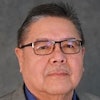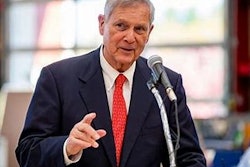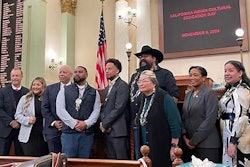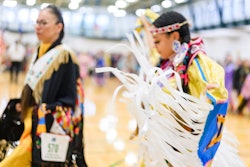The much-publicized settlement between Arizona State University (ASU) and the Havasupai tribe over alleged misuse of DNA samples collected from tribal members sheds light on the often-uneasy relationship between indigenous peoples and academia.
For many American Indians, the case is an example of the paternalism that that has dominated the relationship between academic researchers and tribes for generations.
“There continues to be a sense that Western ways of knowing and understanding are more important and therefore give researchers the right of way in understanding the world,” says Dr. Sonya Atalay, a member of the Anishinabe tribe and an assistant professor of anthropology at Indiana University.
Researchers are beginning to find out, however, that failure to be forthright with research subjects, honor their customs, and produce research for their benefit spurs deep-seated resentment among research populations, according to Atalay. In light of the Havasupai dispute, some tribes developed policy on participating in genetics research while others opted out of research projects altogether.
Several members of the Havasupai tribe in 1990 agreed to provide blood samples to ASU researchers with the understanding that they would conduct studies examining the tribe’s high rates of type 2 diabetes. When they learned the samples were used years later to study mental illness and the tribe’s geographical origins, they banished university employees from the reservation in 2003.
The Havasupai, a tribe of about 650 members living on the floor of the Grand Canyon, sued the university alleging that researchers did not get adequate consent to include the blood samples in additional research. After spending $1.7 million fighting Havasupai claims in court, ASU settled with the tribe in April for $700,000 and issued a public apology. The Havasupai had sought $60 million in the lawsuits it brought against the university.
In video interviews with The New York Times, tribal members expressed a deep sense of betrayal and pain when learning that the university had subjected their blood to genetic testing linking their origins to Asia. This news flew in the face of traditional Havasupai stories of origin that say the tribe emerged from the Grand Canyon.
Research methods must change if academia is to have constructive and meaningful relationships with indigenous peoples in the future, say American Indian scholars, such as Dr. Daniel Wildcat of the Muscogee tribe, a professor of American Indian Studies at Haskell Indian Nations University.
“Any project that doesn’t begin by first approaching the community is an example of the old colonial model of imposition of will on indigenous peoples,” says Wildcat.
He points to the University of Victoria’s interdisciplinary program of Indigenous Governance (IGOV) as an example of a mainstream university “getting it right” by respectfully involving indigenous communities at the beginning of projects.
According to Dr. Jeff Corntassel, a Cherokee tribal member, all research projects at IGOV begin with the four R’s: reciprocity, relationship, relevance and respect. Corntassel is an associate professor at the University of Victoria in British Columbia, Canada, and acting director of IGOV. “Without these concepts in place, we can’t begin a true research partnership,” he says.
Researchers at IGOV see themselves as facilitators in helping communities gain information that is meaningful to their lives.
“Our work needs to be immediately transferable to the community,” he says.
IGOV has done oral history projects in which Indian youth conducted interviews of tribal elders and experiential learning projects such as the Sencoten Canoe Project that involved carving a traditional canoe.
Events such as the Havasupai case encourage other tribes to develop research guidelines for their communities, says Atalay. She points to the 2009 research guide created by the National Congress of the American Indian to help tribal leaders understand and manage proposed research in their communities.
In his introduction to the “Research that Benefits Native People: A Guide for Tribal Leaders,” former NCAI President Joe Garcia wrote, “Historically, researchers and anthropologists have visited our communities to extract information from us, frequently misinterpreting and misusing it, and have minimized the validity of our indigenous knowledge. As sovereign nations, tribes have a role in the research that is conducted in their communities and in regulating that research which occurs on their land and with their citizens.”
In addition to $700,000 in compensation to the 41 plaintiffs named in the Havasupai lawsuit, ASU agreed to return the blood samples, collaborate with the tribe in areas such as health, education and economic development and create a scholarship program for tribal members.
In a formal public apology to the tribe, Ernest Calderon, president of the Arizona Board of Regents, said, “The Board of Regents has long wanted to remedy the wrong that was done. This solution is not simply the end of a dispute but is also the beginning of a partnership between the universities, ASU and the Tribe.”
Atalay and Wildcat noted a probable practical motivation for the university’s settlement.
“I think it came down to a political as well as a moral issue for them. They had no choice,” Wildcat says, “but to settle if they expected to work with any Indian communities in the future.”


















